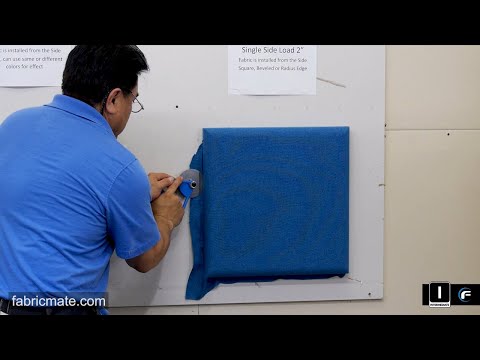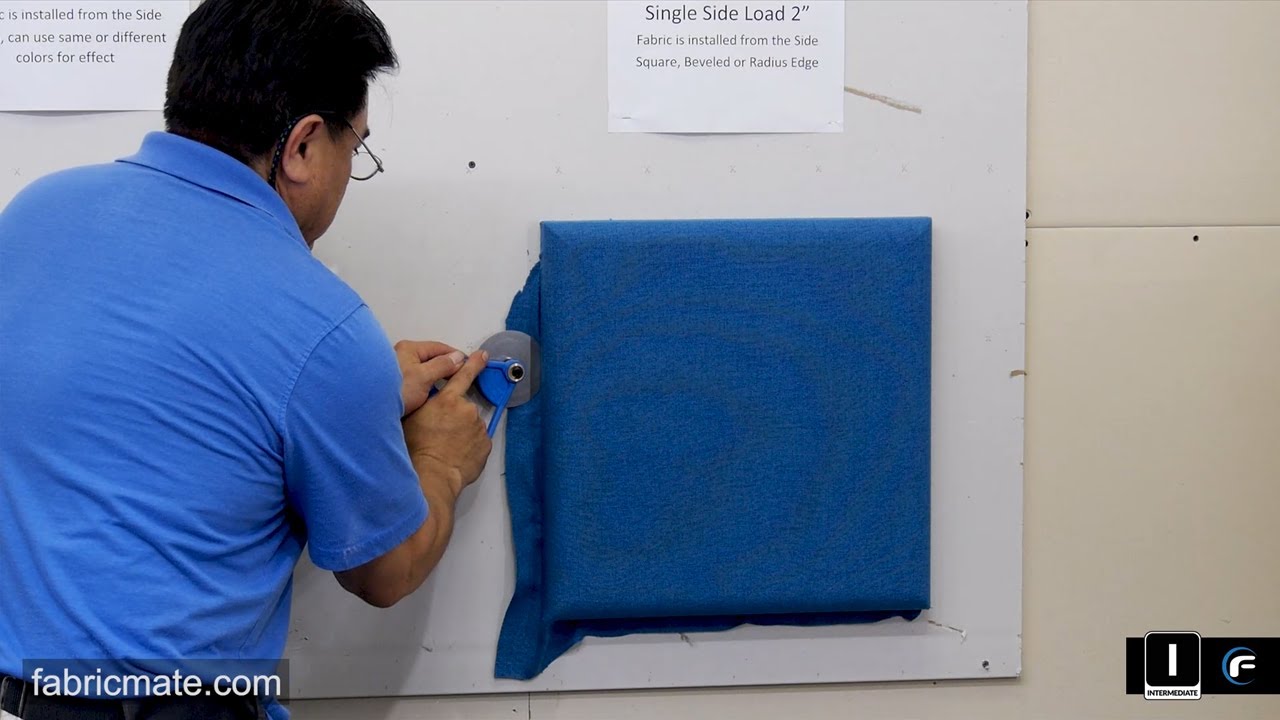Acoustical fabric is the key to transforming any space into an auditory haven. With its exceptional sound absorption properties, this fabric enhances the acoustic quality of any room, creating an immersive and captivating auditory experience. Designed to minimize sound reflections and reverberations, acoustical fabric ensures crystal clear audio, making it the perfect choice for theaters, auditoriums, concert halls, and recording studios. Not only does this fabric improve sound quality, but it also adds a touch of elegance and sophistication to the decor. Its sleek, stylish, and customizable options allow you to seamlessly integrate it into any design scheme. Whether you prefer a bold and vibrant color or a subtle and understated pattern, acoustical fabric offers a wide range of options to suit your aesthetic preferences. Its versatility extends beyond just walls, as it can also be used for curtains, panels, and baffles, effortlessly blending functionality and aesthetics. Say goodbye to unwanted echoes, noise disturbances, and poor acoustics with the extraordinary capabilities of acoustical fabric. Experience the power of sound in its purest form, where every note and word resonates with clarity, thanks to this remarkable fabric.

What is Acoustical Fabric?
Acoustical fabric is a specialized type of fabric that is designed to enhance the acoustic properties of a space. It is used in various applications, such as theaters, recording studios, concert halls, and other venues where sound quality is of utmost importance. Acoustical fabric is typically used as a covering for walls, ceilings, and other surfaces to absorb, diffuse, or reflect sound waves.
The Benefits of Acoustical Fabric
Improved Sound Quality: One of the primary benefits of acoustical fabric is its ability to improve sound quality. The fabric is designed to absorb unwanted sound reflections and reduce echoes, resulting in a more balanced and clearer sound. This is especially important in spaces where accurate sound reproduction is crucial, such as recording studios and concert halls.
Noise Reduction: Acoustical fabric also helps in reducing noise levels within a space. By absorbing sound waves, it helps to minimize external noise intrusion and create a quieter and more comfortable environment. This is particularly beneficial in spaces where concentration, communication, or relaxation is required, such as offices, classrooms, and homes.
Aesthetic Appeal: In addition to its functional benefits, acoustical fabric also adds to the visual appeal of a space. It comes in a wide range of colors, patterns, and textures, allowing for endless design possibilities. Acoustical fabric can be seamlessly integrated into the overall interior design, enhancing the aesthetic appeal of the space while also improving its acoustic performance.
Types of Acoustical Fabric
There are several types of acoustical fabric available in the market, each with its own unique characteristics and applications. Here are some of the most common types:
Micro-Perforated Fabric: Micro-perforated fabric is made up of tiny holes that allow sound waves to pass through while also providing sound absorption. It is often used in spaces where a high level of sound absorption is required, such as theaters and concert halls.
Stretch Fabric Systems: Stretch fabric systems consist of fabric panels that are stretched over a frame to create a taut surface. These systems not only provide sound absorption but also offer the flexibility to create custom designs and shapes. They are commonly used in spaces where both aesthetics and acoustics are important, such as conference rooms and auditoriums.
Printable Fabric: Printable fabric allows for custom designs, patterns, and artwork to be printed directly onto the fabric surface. This type of acoustical fabric is often used in spaces where branding or visual customization is desired, such as retail stores and corporate offices.
Installation and Maintenance
Installing acoustical fabric requires careful planning and expertise to ensure optimal performance. It is important to consult with professionals who specialize in acoustics and fabric installation to determine the best approach for your specific space.
Once installed, acoustical fabric requires minimal maintenance. Regular dusting or vacuuming can help keep the fabric clean and in good condition. In case of stains or spills, it is recommended to follow the manufacturer’s guidelines for cleaning or to seek professional assistance to avoid any potential damage to the fabric.
Conclusion
Acoustical fabric is a versatile and effective solution for improving sound quality and reducing noise levels in various spaces. Its ability to enhance both the acoustic performance and visual appeal of a room makes it a popular choice among architects, interior designers, and sound engineers. Whether you are designing a home theater, recording studio, or office space, acoustical fabric can play a significant role in creating a more comfortable and enjoyable environment.
“Max-Line® 2″ Single Side-Load: Effortless Installation Guide for Acoustic Fabric Walls”
Acoustical Fabric:
Acoustical Fabric Table
| Property | Description |
|---|---|
| Sound Absorption Coefficient | Acoustical fabric is engineered to have a high sound absorption coefficient, meaning it effectively reduces sound reflections and echoes in a room. This is measured on a scale from 0 to 1, with 1 being the highest absorption. |
| Fire Resistance | Acoustical fabric is often treated with fire-resistant materials, making it suitable for use in public spaces and commercial buildings where fire safety regulations are crucial. It complies with stringent fire codes, providing peace of mind to architects and building owners. |
| Aesthetics | Acoustical fabric comes in a wide range of colors, patterns, and textures, allowing it to seamlessly blend with any interior design scheme. It adds an element of visual appeal to acoustic panels and wall coverings, enhancing the overall aesthetics of a space. |
| Durability | High-quality acoustical fabric is designed to withstand the test of time. It is crafted from durable materials that can resist wear, tear, and fading, ensuring a long-lasting and pristine appearance even in high-traffic areas. |
| Microbial Resistance | Many acoustical fabrics are treated to be resistant to microbial growth, including mold, mildew, and bacteria. This feature makes them ideal for healthcare facilities, educational institutions, and other environments where hygiene is of utmost importance. |
As an expert in acoustical fabric, it is important to understand the various properties that make it a versatile and valuable material. The sound absorption coefficient is one of the key characteristics of acoustical fabric, showcasing its ability to effectively dampen sound and create a more pleasant acoustic environment.
Furthermore, fire resistance is a crucial aspect to consider when selecting acoustical fabric. By meeting fire safety regulations, acoustical fabric ensures the utmost protection and peace of mind for building occupants and owners.
In addition to its functional properties, acoustical fabric also offers a wide range of aesthetic options. With numerous colors, patterns, and textures available, it seamlessly integrates into any interior design scheme, elevating the overall look and feel of a space.
Durability is another noteworthy feature of acoustical fabric. Its ability to withstand wear, tear, and fading ensures its longevity and maintains its pristine appearance even in high-traffic areas.
Lastly, microbial resistance is a significant advantage of acoustical fabric, particularly in environments where hygiene is critical. By being resistant to mold, mildew, and bacteria, acoustical fabric provides a clean and healthy atmosphere, making it ideal for healthcare facilities and educational institutions.
In conclusion, acoustical fabric offers a plethora of benefits, ranging from its exceptional sound absorption capabilities to its fire resistance, aesthetic appeal, durability, and microbial resistance. By considering these properties, one can make an informed decision when selecting the perfect acoustical fabric for their specific needs.

